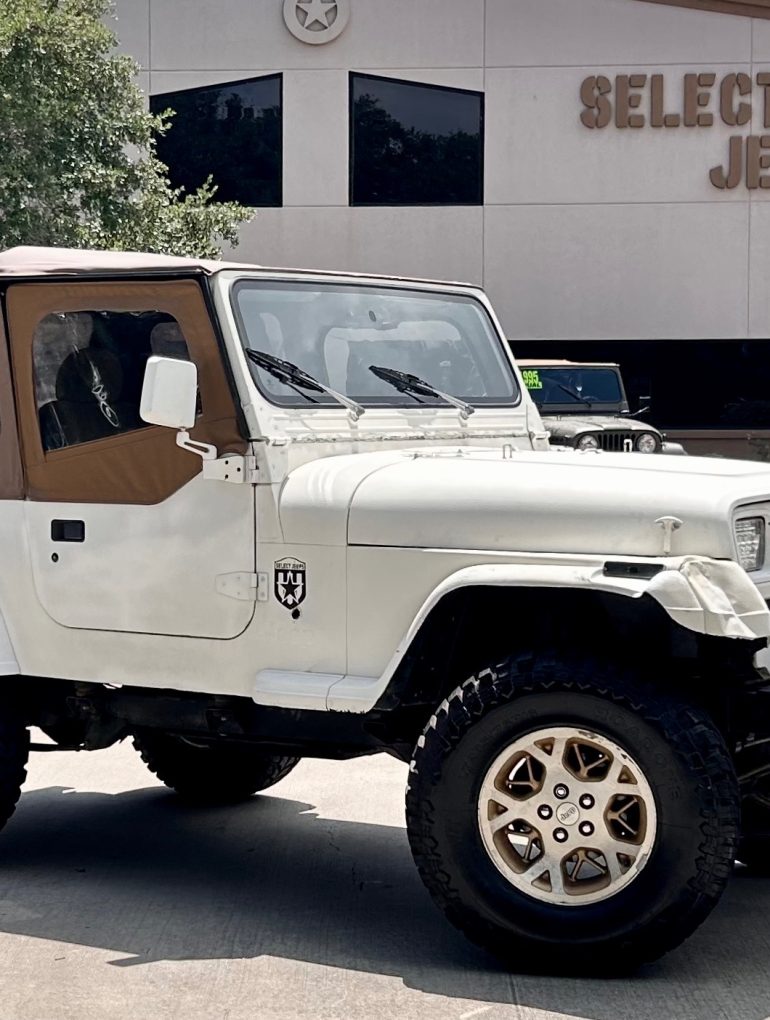The 1994 Jeep Wrangler: A Comprehensive Exploration of an Off-Road Legend
The 1994 Jeep Wrangler, part of the YJ series, marks another significant chapter in the evolution of this iconic off-road vehicle. Building on the strengths of previous models and incorporating refinements and improvements, the 1994 Wrangler further solidified its reputation for rugged capability, reliability, and versatility. This in-depth article delves into the design, engineering, performance, features, and overall impact of the 1994 Jeep Wrangler.
Design and Exterior
The 1994 Jeep Wrangler maintained the distinctive design elements that had become hallmarks of the YJ series. The rectangular headlights, a signature feature of the YJ models, continued to set the Wrangler apart from its predecessors and became an iconic aspect of its design. The familiar seven-slot grille, flat fenders, and boxy shape were retained, honoring Jeep’s military heritage while providing a modern and refined look.
The body-on-frame construction of the 1994 Wrangler ensured durability and strength, essential for off-road adventures. The removable doors and fold-down windshield offered an open-air driving experience, a feature cherished by Jeep enthusiasts. The 1994 model came with various top options, including a hardtop, soft top, and bikini top, catering to different preferences and weather conditions.
Interior and Comfort
Inside, the 1994 Jeep Wrangler focused on enhancing comfort and practicality while maintaining its rugged charm. The interior was designed with functionality in mind, featuring ergonomic seating that provided better support for both on-road and off-road journeys. The dashboard layout was straightforward and user-friendly, with easy-to-read gauges and accessible controls. Despite its utilitarian nature, the Wrangler’s interior included convenient storage options such as a center console, door pockets, and improved climate control.
The 1994 model continued to offer a rear seat option, making the Wrangler more versatile and capable of accommodating up to four passengers. The rear seat could be folded down or removed entirely, providing additional cargo space when needed. This flexibility made the Wrangler suitable for a wide range of activities, from daily commuting to adventurous getaways.
Performance and Capabilities
The 1994 Jeep Wrangler offered robust engine options to meet various driving needs. The 4.0-liter inline-six engine, known for its durability and performance, remained a highlight. This engine produced 180 horsepower and 220 lb-ft of torque, providing ample power for both on-road and off-road driving. Additionally, the 2.5-liter AMC inline-four engine was available, producing 123 horsepower and 139 lb-ft of torque. These engines were paired with either a five-speed manual transmission or a three-speed automatic transmission, giving drivers the flexibility to choose their preferred driving experience.
The YJ’s suspension system, featuring leaf springs with track bars and sway bars, balanced off-road capability with on-road comfort. The solid front and rear axles, combined with high ground clearance, allowed the 1994 Wrangler to navigate challenging terrains with ease, from rocky trails to muddy paths. The five-speed manual transmission and the optional three-speed automatic transmission provided drivers with flexibility in their driving experience.
Technological and Safety Features
The 1994 Jeep Wrangler incorporated several safety and technological features to enhance the driving experience. The vehicle came equipped with front disc brakes and rear drum brakes, providing reliable stopping power. Power steering was available as an option, improving maneuverability, especially in tight spots and off-road trails.
In terms of technology, the 1994 Wrangler offered an optional AM/FM stereo with a cassette player, a notable upgrade for the time. This feature allowed drivers to enjoy music and stay entertained during their journeys. The vehicle’s instrumentation included a tachometer, speedometer, fuel gauge, and temperature gauge, ensuring that drivers had essential information at their fingertips.
Special Editions and Trim Levels
The 1994 Jeep Wrangler offered several trim levels and special editions, catering to different tastes and needs. These included the base S model, the mid-range Sahara, and the top-of-the-line Renegade. Each trim level came with its own set of features and options, allowing buyers to customize their Wrangler to suit their preferences.
The Sahara model, in particular, was popular for its unique styling and additional features. It came with body-colored fender flares, exclusive decals, and a more upscale interior with additional comforts. The Renegade trim offered a blend of luxury and ruggedness, with distinctive body cladding, upgraded interior materials, and more advanced features.
Legacy and Impact
The 1994 Jeep Wrangler played a crucial role in establishing the YJ series as a significant evolution in the Jeep lineup. It balanced the rugged heritage of its predecessors with modern enhancements, appealing to both traditional Jeep enthusiasts and new customers. The YJ’s design, with its distinctive rectangular headlights, became an enduring symbol of the era.
The continued use of the 4.0-liter inline-six engine in the 1994 Wrangler marked a significant improvement in performance, setting a new standard for the SUV market. Its versatility made it a popular choice for a wide range of drivers, from outdoor adventurers to urban commuters. The 1994 model year, with its refinements and improvements, contributed to the growing popularity and success of the Jeep Wrangler, ensuring its place as a beloved icon in the automotive world.
Conclusion
The 1994 Jeep Wrangler YJ represents a pivotal moment in the evolution of off-road vehicles. By blending rugged design, enhanced comfort, and reliable performance, it built on the strengths of its predecessor while introducing features that catered to a broader audience. The 1994 Wrangler’s legacy endures as a testament to Jeep’s commitment to innovation and its unwavering dedication to the adventurous spirit of its drivers. Today, the Jeep Wrangler continues to be a symbol of freedom, exploration, and resilience, with the 1994 model year standing as a significant chapter in its storied history.

